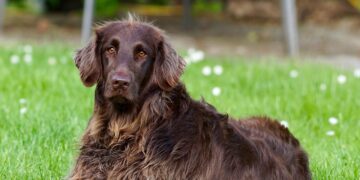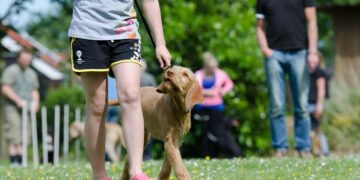Master Dog Behavior Training: Essential Techniques for Every Owner
Whether you’re a first-time pet owner or you’ve had dogs for years, understanding the essentials of dog behavior training is crucial for a harmonious relationship between you and your canine companion. This guide will delve into straightforward, effective techniques that every dog owner should know. From basic commands to handling challenging behaviors, we’ll provide you with actionable strategies to enhance your dog training skills.
Understanding Dog Behavior
Before diving into training techniques, it’s essential to understand why dogs behave the way they do. Dogs are pack animals by nature, which means they thrive on social structure and leadership. Understanding this aspect of their behavior is critical to successful training. By establishing yourself as a calm and assertive leader, you help your dog feel secure and understand their place in your family.
Key Principles in Dog Behavior:
- Consistency: Dogs learn best when the rules are clear and consistently applied.
- Communication: Learning to understand your dog’s body language and signals is just as important as teaching them to understand yours.
- Patience: Training takes time and should be approached with patience and compassion.
Basic Obedience Training
Starting with basic obedience commands is the foundation of any training regimen. These initial steps not only teach essential commands but also establish your role as the leader, helping to curb behavioral issues stemming from confusion or perceived dominance.
Essential Commands:
- Sit: This simple command helps in various situations, such as calming your dog when guests arrive.
- Stay: Teach your dog to stay put until the command is released, crucial for their safety and the safety of others.
- Come: A vital command for recalling your dog in public spaces or dangerous situations.
- Leave it: This command prevents dogs from picking up dangerous items or food.
Each session should last between 10 to 15 minutes for young puppies and can be gradually increased as they grow older. Always end training sessions on a positive note with a reward, praise, or play.
Addressing Common Behavioral Problems
Understanding specific behavior problems can help you tailor your approach to training effectively. Here are some common issues that dog owners face:
Aggression
Canine aggression can stem from fear, territorial instincts, or previous negative experiences. Addressing aggression requires a calm, assertive approach, and sometimes the intervention of a professional trainer, especially if the behavior is severe.
Barking
Excessive barking is often a result of boredom, attention-seeking, or anxiety. To reduce unwarranted barking, ensure your dog has enough physical exercise and mental stimulation. Responding to barking with yelling can reinforce the behavior, so it’s essential to remain calm and redirect their attention elsewhere.
Digging
Dogs often dig due to excess energy or hunting instincts. Providing a designated digging area in your yard can control this behavior while satisfying their digging instinct.
For each of these behaviors, positive reinforcement when your dog displays desired behaviors can be hugely beneficial.
Advanced Training Techniques
Once your dog masters basic commands, you can move on to more advanced techniques. This can include off-leash training, agility training, or learning tricks. These activities not only strengthen your bond with your dog but also provide essential mental and physical challenges that keep your dog healthy.
Positive Reinforcement
Positive reinforcement involves rewarding your dog for good behavior, which encourages that behavior to be repeated. Rewards can be treats, praises, or a favorite toy. The key is to make the reward desirable enough that your dog will want to perform the behavior again.
Socialization
Socialization is a critical part of dog training, particularly when they’re young. Proper socialization involves exposing your dog to various people, animals, environments, and experiences. This exposure helps to prevent fear and aggression and can aid in their overall behavioral development.
Tips for Successful Dog Training
- Start Early: Begin training your puppy as soon as they come home. This doesn’t mean overwhelming them but gently introducing them to the basics.
- Train Regularly: Consistency is key in dog training. Frequent, short training sessions are more effective than long, sporadic ones.
- Use Appropriate Rewards: Understand what motivates your dog and use that as leverage during training sessions.
Effective dog behavior training creates a stronger bond between you and your pet and ensures a happy, healthy home environment. Whether you’re training a puppy or an adult dog, these techniques and insights will help you become a confident, capable pet owner, equipped to deal with a range of behavior issues and training challenges.
Remember, the goal of training isn’t to control your dog but to understand and guide them better. With patience, consistency, and the right techniques, any dog can learn to be a well-behaved member of the family.














































